Manufacturer News
Hydrogen-Fuelled Hiace Van Tested for Light Commercial Duties

Fancy a new van for the business? Like, I mean a really cool new van that runs on hydrogen… Well, this fancy might just be getting fulfilled a little sooner thanks to some Australian business owners who have been given a Toyota Hiace with a hydrogen-powered internal combustion engine (ICE). Yes, that’s right – hydrogen ICE – like the old school ICEs but with new technology that can allow for the cleaner burning hydrogen fuel to be burned as a much cleaner option.
Toyota’s Hydrogen Hiace Van has been undergoing testing by local businesses to see how the hydrogen ICE performs and fulfils its role for powering the Toyota Hiace van while it carries out its daily duties in the real world. If the testing goes well, showing that Toyota’s new Hydrogen ICE is a goodie, then the legendary car manufacturer will set about putting these sorts of vehicles into production.
Let’s start with what’s under the bonnet?
Toyota has designed and built the van’s hydrogen ICE, which is based on the V6 turbo-petrol ICE used in the Land Cruiser 300 model series. The LX600’s 10-speed automatic transmission has been retained in the test van, but it runs with rear-wheel-drive rather than the Land Cruiser’s all-wheel drive system. In petrol form, the V6 is able to pump out 305 kW of power and 650 Nm of torque. In hydrogen form, with the relatively minor changes, the motor puts out a decent 120 kW and 354 Nm. Toyota engineers deliberately matched the 120-kW output found in the standard Hiace 2.8-litre turbodiesel that is currently for sale. The diesel unit provides 66 Nm more torque; however, the new hydrogen ICE prototype’s output and torque sounds pretty decent for a Hiace van, which will be used primarily in business logistics and, obviously, as a trade van, which is classed in the light commercial segment.
The hydrogen fuel is stored under the van’s floor in three tanks, which is good for a range of up to 200 km. What about the emissions from the exhaust? Tailpipe emissions amount to a little bit of nitrogen oxide, and that’s it.
So why hydrogen instead of an EV Hiace?
There is the lack of emissions, but also the fact that a hydrogen Hiace van can theoretically be put into production quickly without any major changes to Toyota’s supply chain, which make the hydrogen alternative desirable from a cost and logistical point of view.

There is also the fact that Toyota gurus, and other tests, have shown that electric vehicles lose a significant amount of range when they are fully loaded up, working hard, or used for towing. Add in the fact that the van shape isn’t the most aerodynamic outline on the market, then we can see why an EV van starts to look a bit sketchy in the real world. Hydrogen, as a fuel, is far more suited for a van that will work hard with heavy loads on board, run against headwinds, or be used for towing. With hydrogen, the driving range is not as significantly impacted as what it is in an EV alternative, so the panic of running out of battery range in between jobs won’t be a concerning issue for your typical tradie – or the person waiting for the plumber to turn up to fix the loo.
Toyota is likely to bring out an Electric Hiace anyway, but they would also like to be able to provide a hydrogen Hiace in the future as well; obviously not straight away, but for when the infrastructure for hydrogen refuelling does become a reality.
On all accounts, it seems that it the prototype Toyota Hiace Hydrogen Van is capable of doing its job well, and really could be all ready for action at the drop of a hat or once the hydrogen infrastructure arrives.
The Nissan Hyper Force Concept Car
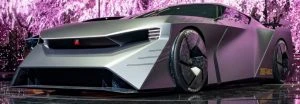
There would be little debate over whether a Nissan GT-R is a legendary supercar or not. It has been one of the most exciting cars of the last two to three decades, having even set a record on the Nürburgring racetrack of 7:08.68 min in 2013, which was achieved by the Nissan GT-R NISMO.
Recently, the Nissan Hyper Force concept car stunned the crowds at a car show in Japan. Could this concept potentially be the next new Nissan GT-R supercar?
The Nissan Hyper Force is an all-electric beast with a seriously brazen design suggesting time warp speeds! In the car’s layout is an application of some clever revolutionary solid-state batteries that enable the supercar’s output to power up to 985 kW. That’s almost 600 kW more than the current GT-R! It’s also good to see that solid-state batteries are starting to break out of the laboratory and into actual vehicles, as they have better safety performance. However, these solid-state batteries are inside something that’s got that little hit of adrenaline. This electric vehicle is electrifying.
With this level of output, the Nissan Hyper Force Concept car is carefully aerodynamically designed to ensure the air is pushed over the car to force it down on the road. In order to achieve the required levels of downforce, there are active winglets up the front end of the car to help channel air over the car, as well as a massive air scoop in the lower bumper, and an array of active fins for air manipulation. If you look at the back of the vehicle, the telltale twin LED taillight clusters are very typical of the Nissan Skyline GT-R. The massive wheel arches on the AWD machine look really spectacular, hiding what must be some serious rubber tyre profiles. If I were making a Batman movie, I’d cast this vehicle as the latest iteration of the Batmobile.
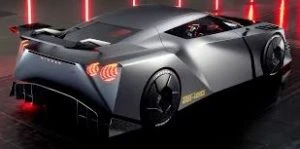
The doors open upwards and forwards in a gullwing-like action. Once the doors are opened, the onlookers are presented with a stunningly wild interior, featuring Lamborghini-crazy styling that is incredibly futuristic, offering sizzling red LED lighting vibes for high-speed driving modes. Gentler GT modes light up the interior in a blue colour. There are plenty of information displays and stylish graphics, as you’d expect. The interior styling continues the edgy, angular diagonal lines of the exterior, giving a Batmobile vibe. And did I see harness style seatbelts in there?
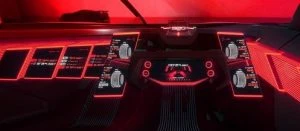
The Nissan Hyper Force concept was at the Japanese car show to inspire people, and to give them a taste of what a new roadgoing Nissan supercar (potentially GT-R) of the future might look like. This is seriously cool! Here’s hoping that we’ll see some of the ideas trickling down. I particularly like the idea of the ambient lighting changing with the driving style, so I hope that we see that one in upcoming Nissan models. I’d also like to see the harness-style seatbelts making their way into regular cars, though they’d take a bit of getting used to, especially for a women (but they could easily be an improvement over the three-pointers we’re used to).
Find out more and have a drool in the official promo video from Nissan:
The Ford CEO’s EV Road Trip Reality Check
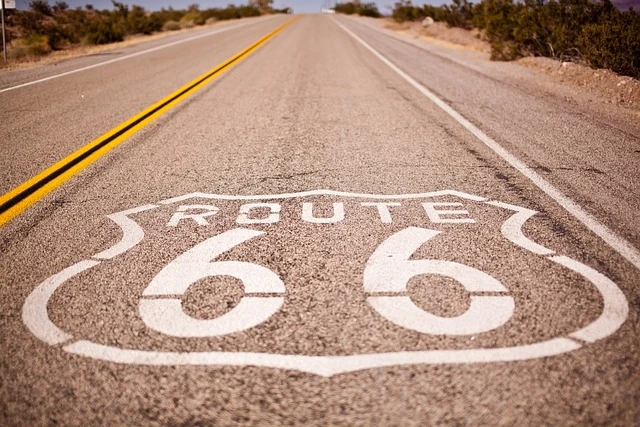
Well, kudos where kudos is due. I came across an automotive news story recently that was too good not to pass on. It’s always good when you read of the CEO of any company getting out of their ivory tower or glass-walled office to get their hands dirty and/or do a bit of road-testing for themselves rather than letting those in the lower echelons do it. That’s exactly what happened recently in the case of Jim Farley, the CEO of Ford in the USA.
Ford USA has been putting a fair bit of R&D investment into the upcoming electrical ute, the F-150 Lightning (not yet available in Australia at the time of writing, but we can keep our fingers crossed). Now, the idea of this vehicle was that it was supposed to be for rural types in rural areas. The idea was to make the sort of thing that belongs in a Country and Western song: the trusty old pickup that can handle dirt roads. However, instead of just leaving things to the developers and the number-crunchers and the sort of people who test battery life and performance under ideal conditions, Mr Farley decided that the best thing to do was to pull a Bertha Benz and take the new vehicle out on the road, partly as a real-world road test and partly as a publicity stunt.
And if you’re going to go on a high-profile road trip across the United States, there’s only one road that springs to mind (hint: it’s not the Pan-American Highway). Yes, Jim Farley headed out in the all-electric Ford F-150 Lightning on the legendary Route 66. Naturally, he posted the highlights of his trip on social media, specifically on Linked In and on Twitter or X or whatever it’s calling itself today. Yes, the fact that the Ford CEO documented his experiences with this ute that’s specifically designed to be a rival to Tesla’s Cybertruck on the platform owned by the CEO of Tesla is deliciously ironic (but I guess it’s proof that Musk is serious about the no censorship thing – so kudos to him as well).
The F-150 Lightning behaved itself nicely on the road, but there was one issue that Mr Farley described as a “reality check”: charging times. Not that he ran out of zap or anything like that, but one thing he found was that when he came to some of the more popular charging stations, all the really fast superchargers were taken up, so he had to plug in to one of the slower ones. He reported that it took him 40 minutes to get to 40% charge, and he acknowledged that this is a “challenge” faced by customers. Superfast charging was great, he found, but the slower chargers, not so much. And, being in the position to do something about it, it looks like plans are afoot to improve the charging infrastructure in the USA.
It would be interesting if someone would do a similar road trip here in Australia. It should include the Great Ocean Road, but as that’s only 240-ish kms long, perhaps the Big Lap on Highway 1 would be a real test (give us your suggestions as to what would be a good test in the comments). Do we have suitable charging infrastructure here to ensure that road trips for business or pleasure – to say nothing of everyday driving – is smooth and efficient? Perhaps we’ll find, like those in the US, that perhaps we don’t have the infrastructure in place to go all-out electric (to say nothing of the ability to generate electricity). After all, EVs are only part of the equation when it comes to cutting down or cutting out fossil fuels, with biofuels and hydrogen being the other pathways that don’t seem to be quite getting enough attention.
However, the longer charging times weren’t all bad. One thing that Mr Farley reported was that there seemed to be something of a community of EV drivers gathering around the charging stations, and perfect strangers would start talking to each other in the time spent waiting for (a) a free charger and (b) the battery to charge. It’s like the car and the shared need created a connection and introduced people. If you’ve got a motorbike, you’ve probably experienced something similar even at petrol stations: other bikers (and former bikers and those who admire bikers) will start chatting. If there’s one thing that we learned during the Covid lockdowns, as well as washing our hands properly, it’s that in-person connections are important. Perhaps the enforced waiting and slowing down of EV charging stations will be good for humanity at a psychological level… or perhaps I’m being idealistic here, as it could equally lead to frustrations and the opportunity for entitled people to show their worst sides.
Spot the Difference?
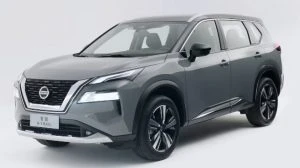
 Did you know that the Renault Koleos is very much a Nissan X-Trail? Were you also aware that the current BMW 7-Series is the platform for the new Rolls-Royce Dawn? These days car manufacturers are sharing a lot of the components that go into making a new vehicle. A lot of the electronic systems and computer chips are shared between makes and models, even engines and an entire body platform. As the costs of designing and building a complex new car rise, by getting together and pooling money, skills, assets, and sharing the costs of the new build, these are definitely clever ways for manufacturers to reduce their overheads, and the overall cost of designing and building a new vehicle.
Did you know that the Renault Koleos is very much a Nissan X-Trail? Were you also aware that the current BMW 7-Series is the platform for the new Rolls-Royce Dawn? These days car manufacturers are sharing a lot of the components that go into making a new vehicle. A lot of the electronic systems and computer chips are shared between makes and models, even engines and an entire body platform. As the costs of designing and building a complex new car rise, by getting together and pooling money, skills, assets, and sharing the costs of the new build, these are definitely clever ways for manufacturers to reduce their overheads, and the overall cost of designing and building a new vehicle.
Platform sharing between manufacturers and between models is, perhaps, more common than you may have thought; and particularly now more than ever. In some cases, the similarities between a particular car, truck, or ute and its platform-twin are obvious. However, at other times it’s not so easy to detect the resemblance.
A car’s platform is the base (including body shell, floor, and even some of the chassis and engine parts) on which it is built. Not only can these components be common to more than one manufacturer, but they can also be shared between models in a manufacturer’s line-up. The initial platform design and its production or engineering works can be shared across a number of different models. Kia and Hyundai are some of the best brands at doing this sort of thing, and so too is VW.
Sharing componentry between different manufacturers/brands has to be built on an existing good business relationship. So, when two or more automotive manufacturers with a good relationship have shared the same desire to save money, they can operate together and agree to share development costs and also essentially sell the same cars but under different badges. Renault and Nissan are great examples of this. Some of the most talked about illustrations of this occurring recently will have been the Toyota GT86 and the Subaru BRZ, which are essentially the same cars tarted up slightly differently. Also, the Toyota Corolla station wagon and the Suzuki Swace (a less known model here in Australia) are exactly the same car. Another illustration would be the awesome new Toyota Supra and BMW Z4 cars. Also, Volvo has platformed shared quite frequently over the years. The Global C-car Platform from Ford saw the Volvo S40 and V40 share much with the Ford Focus and Mazda 3. Well known Hyundai and Kia have utilized several duplications of platforms for their small automobile line-up since 1997.
Having a shared engineering platform, where manufacturers build a basic foundation that can be used across many of its own models is an advantage. The Volkswagen Group (VW), and the brands it owns, (Audi, Bentley, Lamborghini, Porsche, Seat and Skoda) are masters of this craft. VW has a common practice where they will build a smaller number of platforms, but the benefits come when they will then re-purpose these platforms across their own different brands. When VW designed and built the MQB (Modularer Querbaukasten) platform, it was shared across the Audi A3, Skoda Octavia, and Seat Leon. Also, one of its SUV platforms is shared and utilized by the Audi Q7 and Q8, the Bentley Bentayga, the Lamborghini Urus, and Porsche’s Cayenne.
BMW’s 7-Series is the platform for the immensely luxurious and expensive Rolls Royce Dawn. The new 7-Series is luxurious and sleek in its own right, but it is also much, much cheaper to buy – comparatively.
Some other new vehicles that are currently sharing platforms:
Cadillac CTS and Chevrolet Camaro
VW Polo and Skoda Scala
Mercedes Benz GLE and Jeep Grand Cherokee
Renault Koleos and Nissan X-Trail
Fiat 500 X and Jeep Renegade